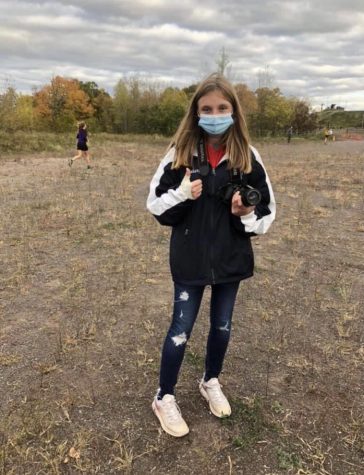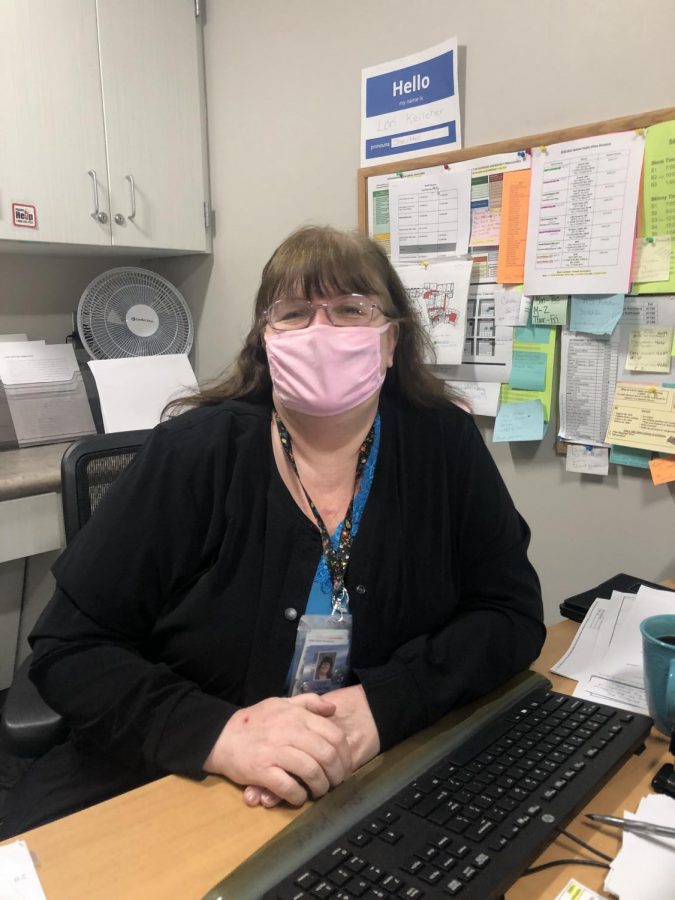Process of COVID vaccine
It’s important to understand the process of how the Covid Vaccine works to ensure that people know if and when they should or should not get the vaccine
Superior High School Nurse, Lori Kelleher is hard at work on Jan. 26. Kelleher had recently got the vaccine on Jan. 13th.
February 22, 2021
People, students especially, don’t know about how the vaccine works, and it can seem like an extremely complicated process to someone who doesn’t understand how it works. Many people, based on their eligibility, are getting the vaccine, for different reasons including work, family, and health in many different places which are mirrored by their reasons for getting the vaccine in the first place.
Eligibility
The Center for Disease and Control (CDC) released who should be eligible for the vaccine, explaining the different phases of people who can get the vaccine based on their age, health conditions, and occupations.
The first phase of people who are eligible for the vaccine is phase 1a. People who are eligible for this phase are health care personnel and long term care facility residents. Lori Kelleher, the school nurse, identifies within the health care personnel grouping and was able to get her vaccine.
The second phase of eligibility- known as phase 1b, are frontline essential health workers. According to the CDC, people who might identify as frontline or essential health workers could be firefighters, police officers, corrections officers, food and agricultural workers, United States Postal Service workers, manufacturing workers, grocery store workers, public transit workers, and those who work in education.
Another group of people who are a part of phase 1b are people aged 75 years and older, for reasons having to do with possible varying health conditions, increased illness from COVID-19 and increased death in that age group from the disease.
Lastly, phase 1c includes people of ages 65-74 years mainly due to higher hospitalization rates, along with people ages 16-64 with underlying medical health conditions. People who work in transportation and logistics, food service, public safety, and public health can also identify as phase 1c.
Eligibility Standards in Wisconsin
As of right now, Wisconsin residents who can identify themselves as either in phase 1a or phase 1b are currently eligible to get the COVID vaccine. According to the Wisconsin Department of Health Services, around March 1 some people in phase 1c will also be eligible such as education and child care workers, individuals enrolled in Medicare long term care programs, some public-facing essential workers, non-frontline essential health care personnel, as well as staff and residents in congregate living facilities.
Why or Why Not to get the Vaccine
There are many differing reasons why someone may or may not want the vaccine.
“It will help you stay safe and in good health, and it’s probably safer to take the vaccine then to not,” Kelleher says.
Some people, on the other hand, are less than excited about taking the vaccine.

“I would not take the COVID vaccine because I believe that younger people are not as affected by COVID as elderly people are more at risk,” Winberg states. Although Kelleher and Winberg have different points of view regarding getting the vaccine, they both agree that there could be some possible underlying side effects of the vaccine.
Although Kelleher said that the vaccine has been tested through a safe government process, and therefore it should be pretty safe.
“Due to childbearing and some varying health conditions, combining both the vaccine and these different things could possibly end badly,” Kellecher said.
A common misconception about the vaccine is that there is some COVID-19 virus in the vaccine. According to the CDC, “None of the COVID-19 vaccines contain the live virus that causes COVID-19 so a COVID-19 vaccine cannot make you sick with COVID-19.”
The Process of Getting Vaccinated
According to the Wisconsin Department of Health Services-there are many different places, in Wisconsin, where someone can get vaccinated including health care providers, pharmacies, local health departments, places of employment, and community based vaccination sites.
After someone might figure out where to get the vaccine, they may have to be registered with proof of eligibility.
Once someone is actually getting their vaccination, they can expect to receive a vaccination card that explains what vaccination they are receiving, the date and where they are receiving it. Next, the person will receive either a paper or online fact sheet explaining more specific information regarding which COVID-19 vaccination they are getting. Right now there are two types of COVID vaccines that are available, while there are 3 more types of vaccines in the clinical trial phase, according to CDC.
According to Kelleher the vaccine didn’t hurt at all.
“It hurt a little but it was very similar to getting the flu shot,” said Alexa Brokaw, a senior at SHS, who got the vaccine because she is a CNA.
After the initial dose of the vaccine, people will need a second dose of the vaccine in order to have full protection from COVID-19. It’s important to get the second shot even if they have side effects after the first one, unless a vaccination provider or your doctor tells individuals not to get a second shot.



